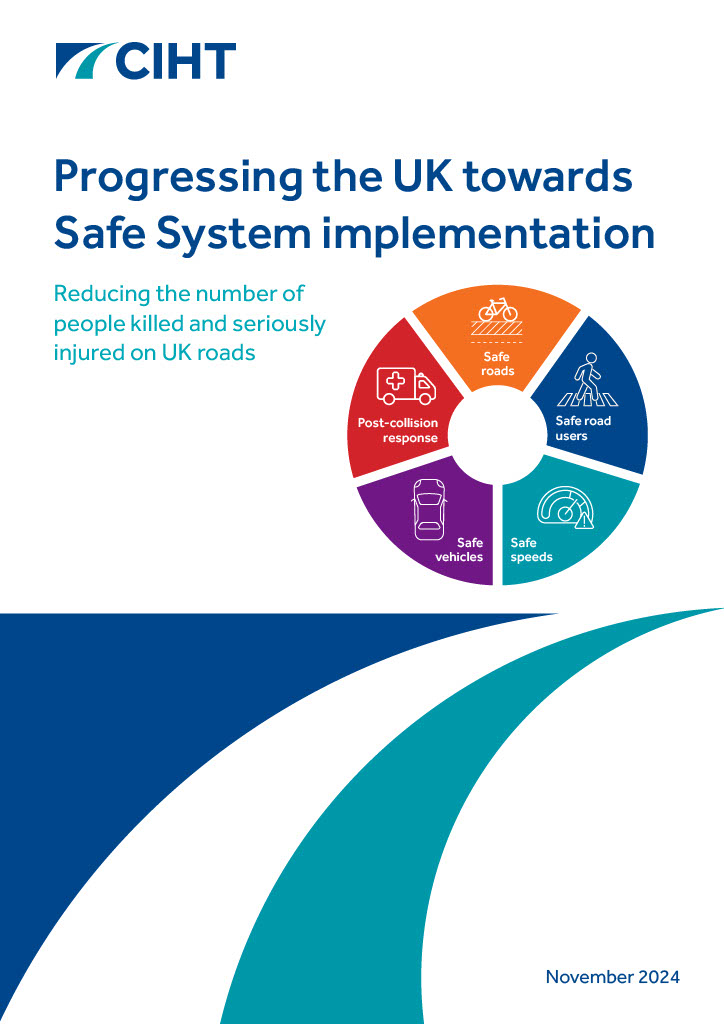

This report investigates how the Safe System can help reduce the number of people killed and seriously injured on UK roads and provides indicative actions to support the delivery of the Safe System.
Join other savvy professionals just like you at CIHT. We are committed to fulfilling your professional development needs throughout your career

Please complete the form to have access to the report.
As stated in our manifesto, A transport network fit for all our futures, CIHT believes that everyone should have the ability to travel safely. Mobility should not be associated with the unacceptable risk of death and serious injury.
Reductions in the number of people killed and seriously injured on UK roads has been slowing. CIHT’s new Policy and Technical report investigates how the Safe System can help reduce the number of people killed and seriously injured on roads.
This report focusses on the challenges of implementing safe speeds and safe roads – two of the elements of the Safe System – in the UK. It highlights recommended actions for the UK Government that, if implemented, we believe will help reduce the number of people killed and seriously injured on UK roads.
This report was developed with the support of the CIHT Partnership Network, The CIHT Technical champions and experts in the sector.
A special thank you to:
Insight has been gained through a series of research and engagement activities, including workshops and consultations with key sector stakeholders.
If you would like to contribute your knowledge or experiences on road safety and Safe Systems then please email the CIHT Policy and Technical team at technical@ciht.org.uk .
Join other savvy professionals just like you at CIHT. We are committed to fulfilling your professional development needs throughout your career
Sign up to the APM Newsletter.